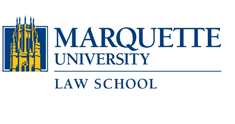Abstract
On March 1, 2006, a pair of detectives interrogated sixteen-year-old Brendan Dassey—one of two defendants prominently featured in the 2015 Netflix series Making a Murderer—for several hours about his role in the October 31, 2005, disappearance of photographer Teresa Halbach. The prosecution introduced statements obtained during that interrogation at Dassey’s trial. With no corroborating physical evidence, those statements—including that Dassey cut Halbach’s throat—played a significant role in his conviction for Halbach’s murder.
Following his conviction, Dassey’s appellate arguments about the legitimacy of his confession focused on his March 1, 2006, confession. Most recently, his petition for a writ of certiorari before the U.S. Supreme Court argued that the March 1 confession was involuntary and that using it against him at trial violated the Fourteenth Amendment’s due process clause.
But the value of Dassey’s case for educational purposes involves much more than just a voluntariness issue. Dassey’s case presents other more fruitful grounds for challenging his conviction that were either not preserved by his earlier lawyers or were subjected to severely flawed judicial analysis. This Article therefore argues that Dassey’s case provides a special educational opportunity for law schools thanks to the international attention on his case and the Making a Murderer documentary. Stated differently, this Article argues that Brendan Dassey’s story is the consummate teaching opportunity.
This Article proceeds in three parts. Part II offers a brief primer on Dassey’s case before discussing the interrogation methods that officers used on Dassey over the course of numerous different interrogations from November of 2005 to March of 2006. Then, Part III discusses with specificity how Dassey’s interrogations demonstrate the need for law schools to teach interrogation methods to students. Finally, Part IV explores why the Wisconsin appellate judiciary concluded that Dassey’s pretrial lawyer, Len Kachinsky, provided constitutionally competent defense representation despite failing to preserve several critical issues. Dassey’s case illustrates a harsh reality for students: poor lawyering passes muster for Sixth Amendment purposes.
Repository Citation
Brian Gallini,
The Interrogations of Brendan Dassey,
102 Marq. L. Rev. 777
(2019).
Available at: https://scholarship.law.marquette.edu/mulr/vol102/iss3/6
Included in
Civil Rights and Discrimination Commons, Criminal Law Commons, Criminal Procedure Commons
